Bruce Mozert is certainly the most famous and accomplished photographer in the history of Silver Springs, but there were also some other intriguing and pioneering talents who helped pave the way.
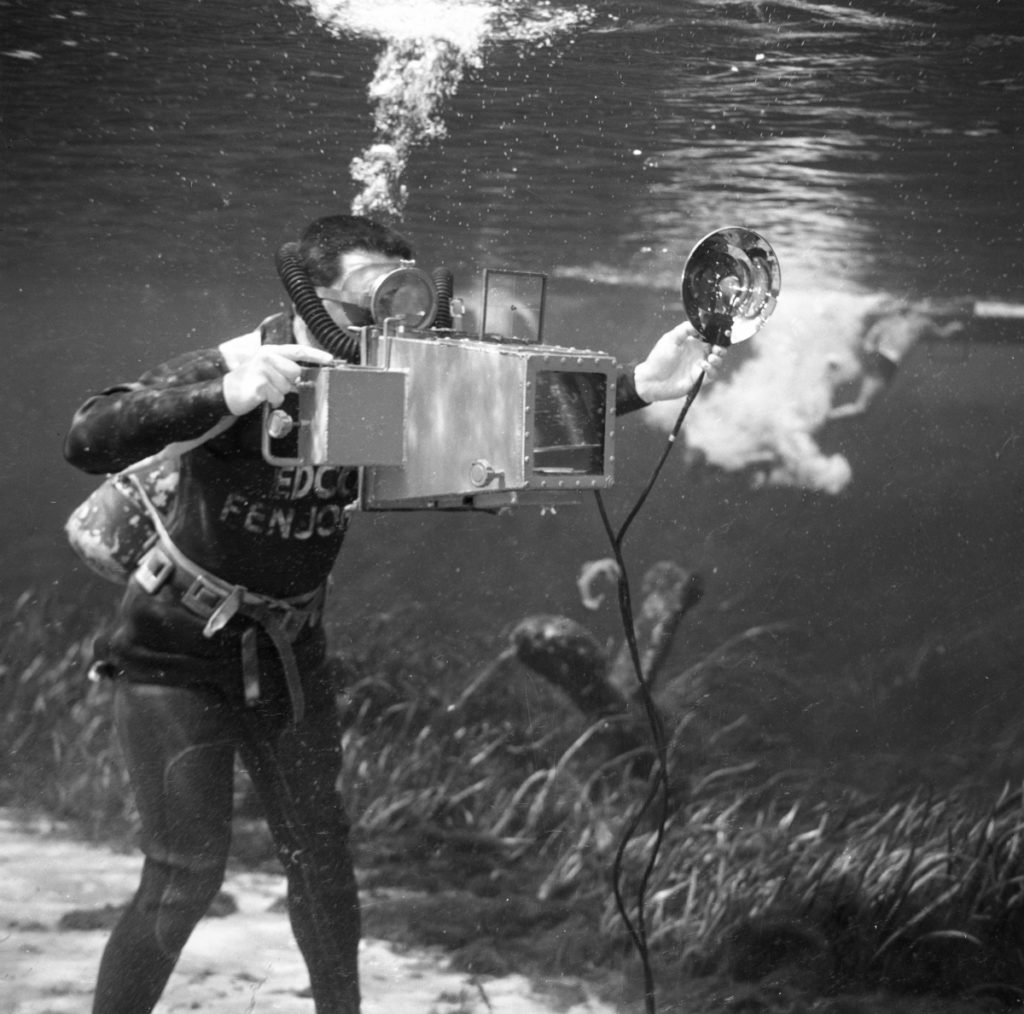
People have been drawn to the natural beauty of Silver Springs for centuries. As soon as the camera was invented, visitors began to record what they saw with photographs. Early cameras were clumsy, expensive and complicated to operate. Up until about the 1930s, most photographs at Silver Springs were created by professionals. Early images are rare and unique in that they provide an honest window to the past. Want to see what Silver Springs looked like during the heyday of steamboats or the some of the first glass-bottom boats? Well there are photographs that record those moments in time and, when compared to the landscape today, can reveal fascinating details about how much Florida has changed over the years.
Ask any longtime resident of Ocala who the best-known photographer was at Silver Springs and you’ll undoubtedly hear the name Bruce Mozert. He was hired on at the springs in 1938 and, other than leaving to serve in World War II, worked there as the staff photographer into the 1980s.
Mozert helped create the images that were instrumental in the aggressive and wildly successful national advertising campaign that made Silver Springs one of the nation’s most popular tourist attractions in its day. Mozert is also credited with developing the very first watertight camera housings that made underwater photography possible. Disposable underwater cameras are easy to find these days but when Mozert took the first camera below the surface it was cutting-edge technology.
Dig around in the history books and look back in time before Bruce Mozert and you’ll find that, while he was innovative and creative, he was not the first person to view the springs through a lens. Long before Mozert made his mark in advertising and underwater pinup girl shots, there were interesting characters who had visited the springs over the years to record what they saw.
Two photographers, both born in the 1800s, stand out. They are similar in that they made lasting images of Silver Springs using the camera, but were very different in how they created their photos and the lives they led. If you are a history buff, lover of old photographs, or have been around Marion County for any period of time, chances are you have seen photographs produced by both William Henry Jackson and Henry R. Bezant.
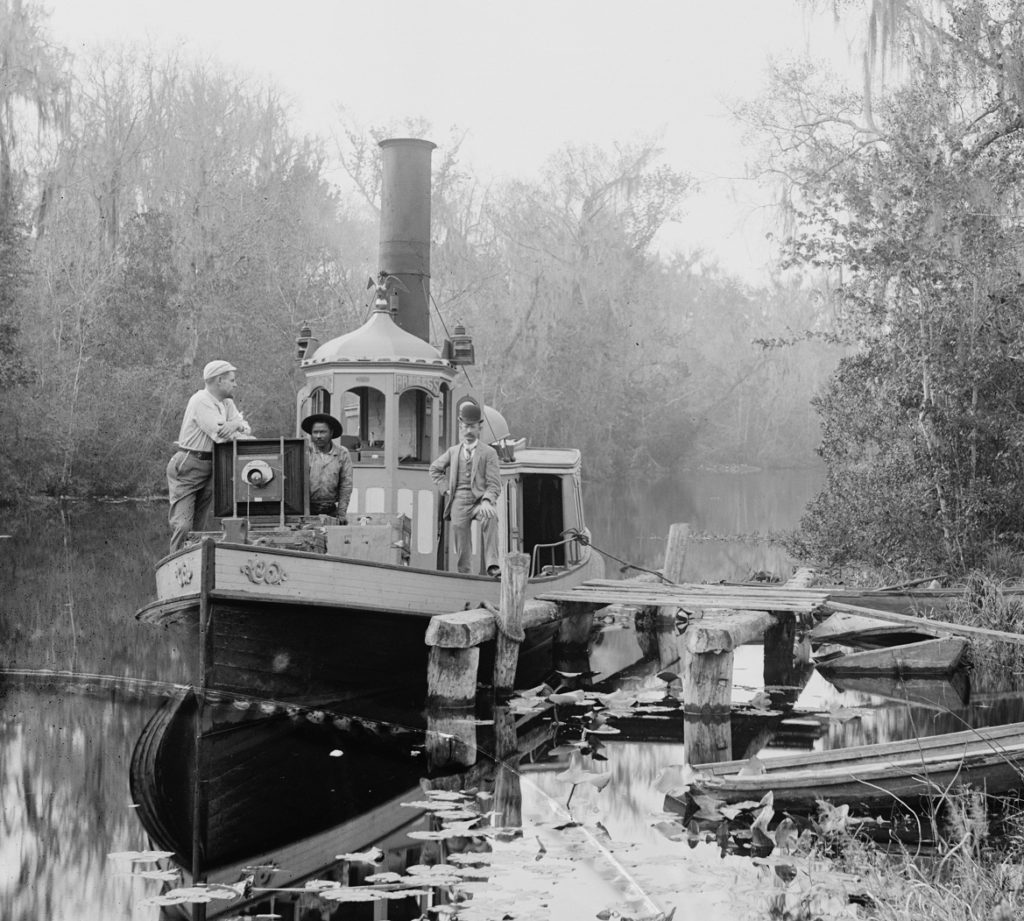
William Henry Jackson (1843–1942)
Although Jackson was born and died in New York he was not an idle man. He was a painter, photographer, illustrator, publisher and explorer. He served in the Civil War as a young man and headed west immediately afterwards to start his career and extensive travels. While Jackson is best known for his images of Western landscapes (he published the first photographs of what is now Yellowstone National Park), he was a world traveler.
Thankfully, he also took time to record images of everyday people and scenes. Over the winter of 1900-1901, Jackson traveled along the Atlantic Coast from Virginia to Florida. While in Florida, he visited the Ocklawaha River, Silver River and Silver Springs aboard the small but ornate steamboat Princess, which he chartered out of Palatka. It was on this trip that he captured iconic scenes of steamboats at Silver Springs and a few wonderfully candid images of locals waiting at the docks. Other images capture the Princess with crewmen and a large camera on the deck.
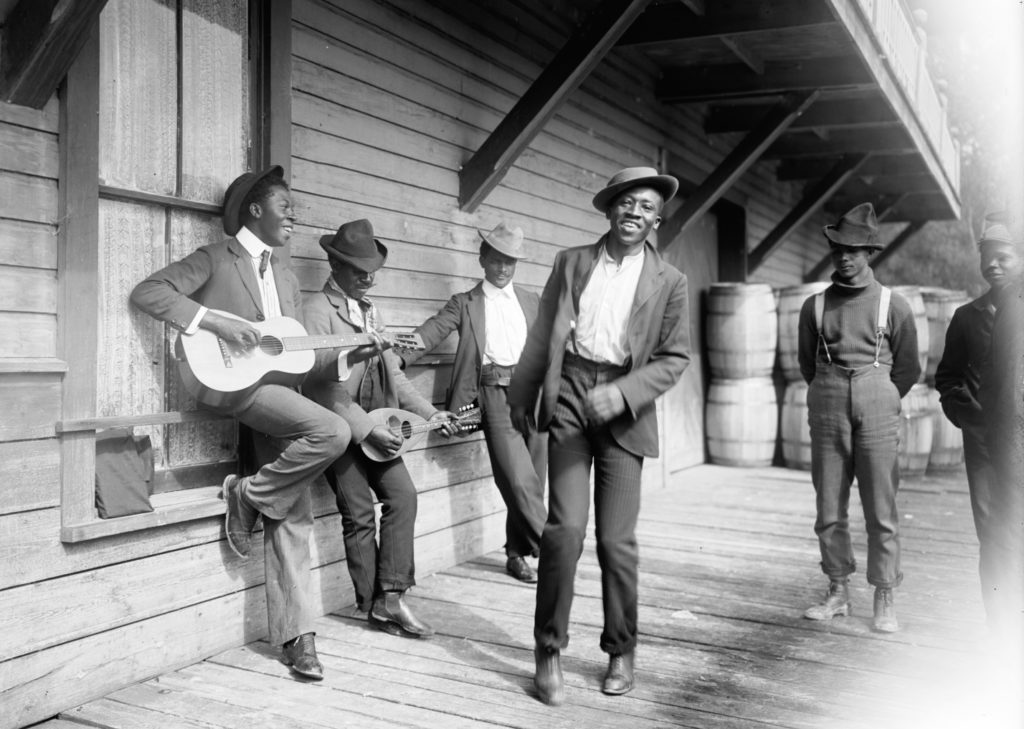
His work for Western railroads as a photographer led to an exhibition featuring Native Americans and scenes of the American West at the famous 1893 world’s fair in Chicago. The next year he joined the World Transportation Commission as a photographer to travel the globe between 1894 and 1896. During this expedition he created more than 900 images in North and East Africa, the Middle East, India, Australia, East Asia, Europe and Central and South America.
The cameras Jackson carried used fragile glass plates of various sizes (the one in the photo of the Princess likely used an 18×22 inch glass plate). Although primitive by today’s standards, the large glass plates resulted in detailed and sharp images. Developing the glass plates into photographs was complicated and time consuming. The process is known as wet-collodion emulsion and requires extensive experience to master. Jackson was, in fact, a master and, between 1870 and the late 1920s, he created 53,879 glass plate images, of which 30,000 eventually went to the Library of Congress and can still be researched today.
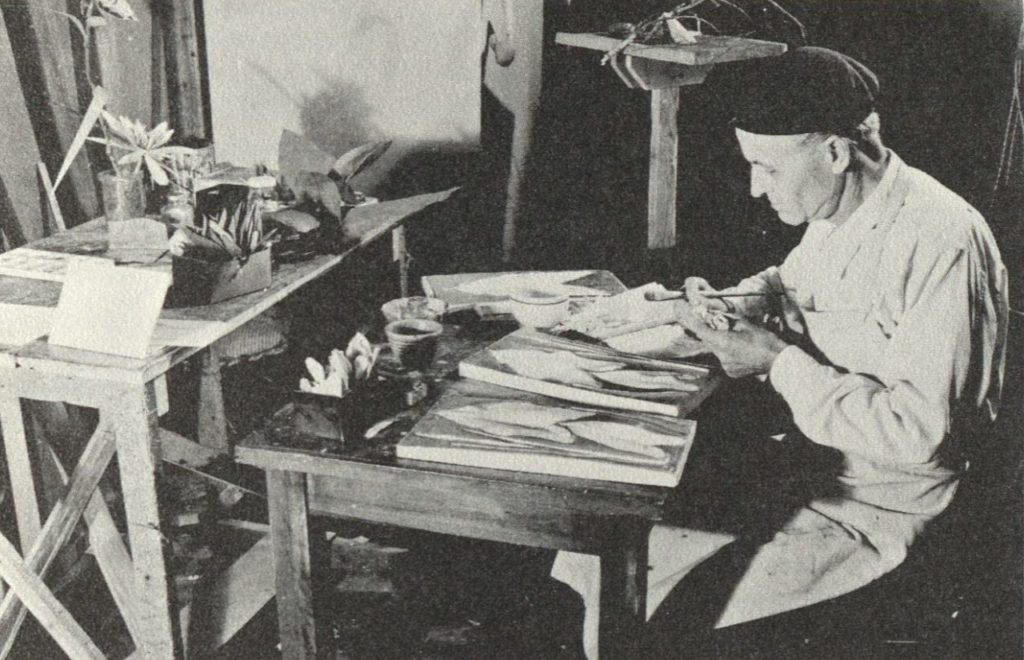
Henry R. Bezant (1887–1984)
Like Jackson, Bezant was born during the 1800s (in England) amid the pioneering days of photography. His images can be found in the early hand-colored postcards of Silver Springs with the name H.R. Bezant appearing in one of the lower corners. While Bezant is not as well-known as Jackson, nor was he as well traveled, he is important to Silver Springs for several reasons.
It is unknown when Bezant moved to the United States. However, at the age of 33 he had already authored at least one article in the 1920 American Journal of Photography on “Improving Prints by Retouching.” One must remember that color photography was not available to the public until the late 1930s and, even then, it took years to become affordable and commonplace. Bezant brought black-and-white images to life by adding color and went one step further. He took his camera underwater years before scuba gear was invented and before Mozert had developed his waterproof camera housings.
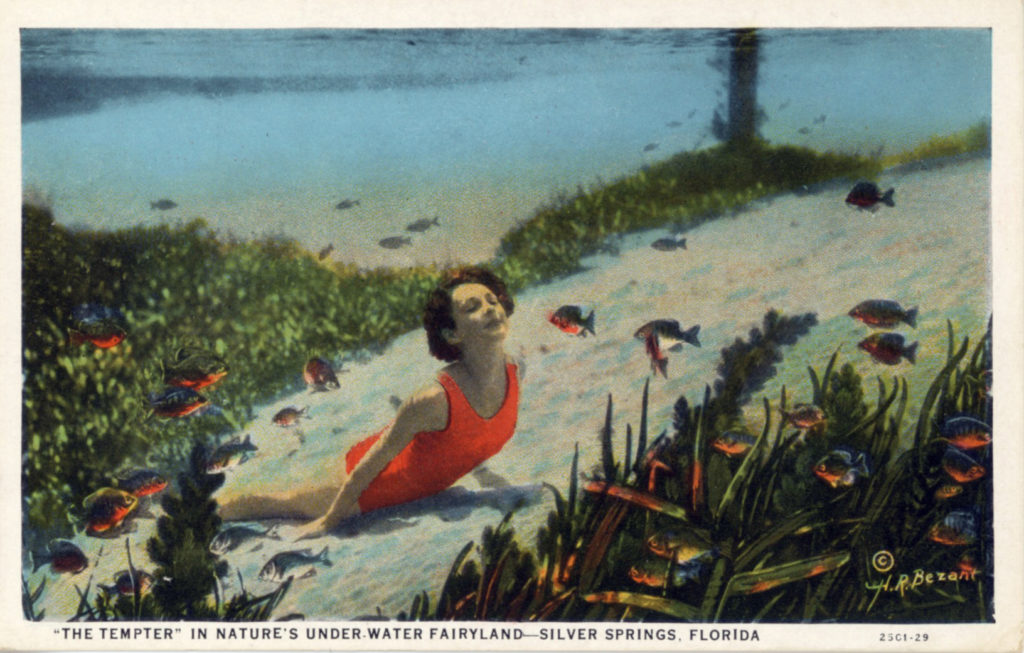
Bezant made extensive use of the newly developed “photo-sub” boats at Silver Springs. The modified glass-bottom boats featured a small compartment that extended down into the water and allowed passengers to view underwater scenes from the side. The unique photo-sub arrangement allowed Bezant to snap images of his subjects, who, much like Mozert’s models, were often attractive young women, swimming or posing in the crystal-clear water of the springs. While not considered extreme by today’s standards, this was practically unheard of during the 1930s.
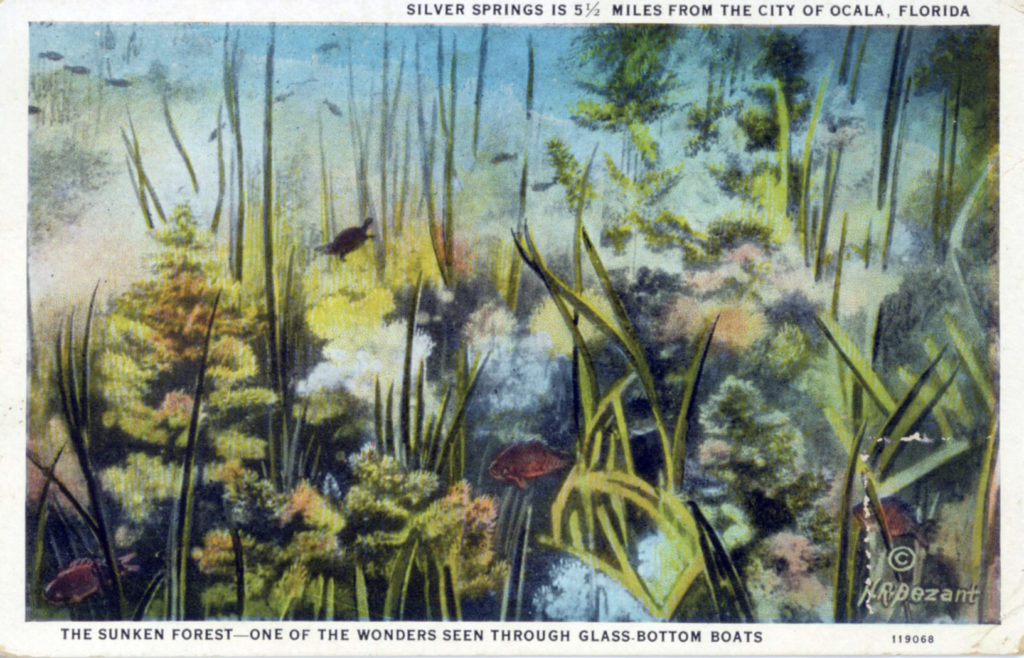
Bezant’s postcards showing underwater scenes can be misleading in that they appear at first glance to have been made more recently during the days of color film and scuba. It is only upon closer inspection of copyright dates, and the style of clothes and automobiles, that we see they actually predate those technologies and that Bezant was in fact very much ahead of his time.
It is not surprising that Bezant’s colorized photos appear on numerous early postcards of Silver Springs. His images were also featured in the booklet The Shrine of the Water Gods produced by Carita Doggett Corse (copyright 1935). Although long out of print, this small but romantic booklet can still be found today in antique shops and it played a central role in immortalizing the lore of Silver Springs.
Bezant is listed in the 1940 census as living in Ocala with his wife and two children. He next appears in the historic literature as working as an artist/exhibits preparator for the Florida State Museum (when it was located in the old Seagle Building near downtown Gainesville) where he created museum displays. Like Jackson, Bezant lived to see old age and incredible developments in photography. He died in Texas in 1984 after moving there to be closer to family.
Although Bezant was not a famous photographer in his day, his retouched and hand-colored underwater photographs of attractive female “bathers” at Silver Springs set the stage for Bruce Mozert who would further develop the same genre and export it as a local art form across the United States in advertising shots that helped make our part of Florida world famous.
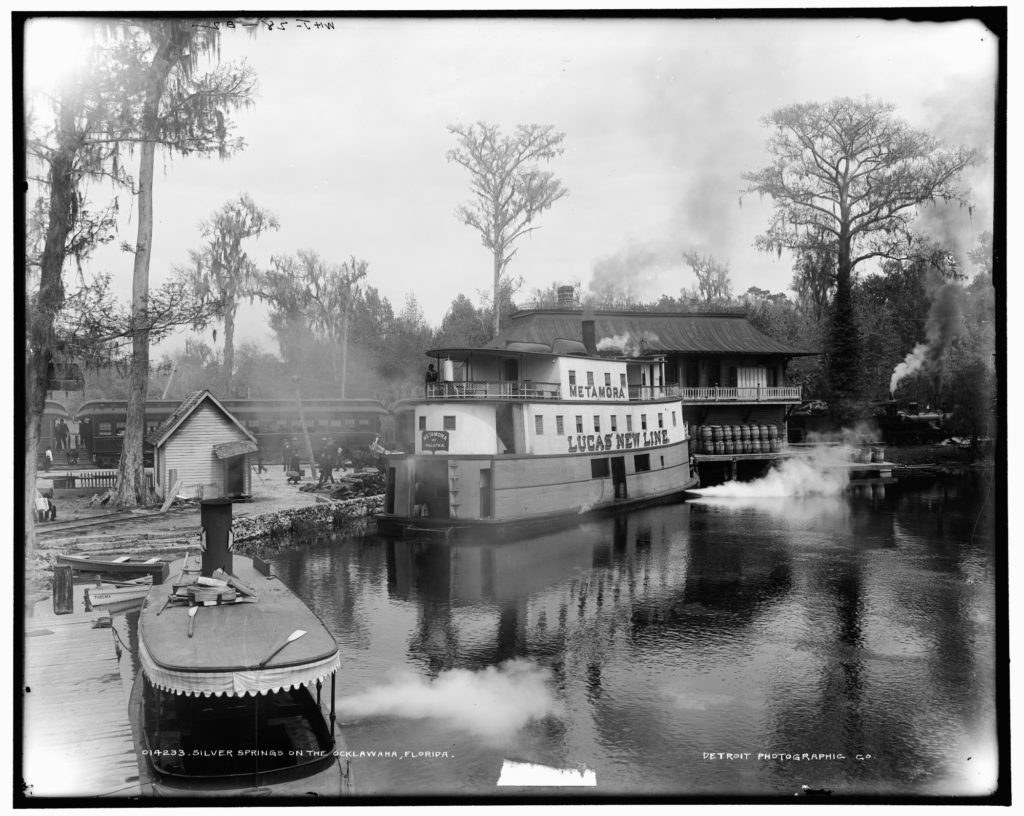
Jackson, Bezant and Mozert are similar and different in many ways. Each photographer was a pioneer in his own time to some degree. Each of them recorded a fleeting moment in time and helped immortalize Silver Springs for the ages.
Scott Mitchell is the director of the Silver River Museum & Environmental Education Center. He has worked as a field archaeologist, scientific illustrator and museum professional for the last 25 years.






